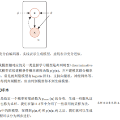This paper proposes a novel way of doing audio synthesis at the waveform level using Transformer architectures. We propose a deep neural network for generating waveforms, similar to wavenet \cite{oord2016wavenet}. This is fully probabilistic, auto-regressive, and causal, i.e. each sample generated depends only on the previously observed samples. Our approach outperforms a widely used wavenet architecture by up to 9\% on a similar dataset for predicting the next step. Using the attention mechanism, we enable the architecture to learn which audio samples are important for the prediction of the future sample. We show how causal transformer generative models can be used for raw waveform synthesis. We also show that this performance can be improved by another 2\% by conditioning samples over a wider context. The flexibility of the current model to synthesize audio from latent representations suggests a large number of potential applications. The novel approach of using generative transformer architectures for raw audio synthesis is, however, still far away from generating any meaningful music, without using latent codes/meta-data to aid the generation process.
翻译:本文提出一种使用变压器结构在波形层进行声学合成的新方式。 我们提出一个用于生成波形的深神经网络, 类似于波形 \ cite{ord2016波子网}。 这是完全概率性、 自动递减性和因果性的, 也就是说, 生成的每个样本都只取决于先前观察到的样本。 我们的方法在预测下一步的类似数据集上比广泛使用的波网结构高出9 ⁇ 。 但是,我们利用关注机制, 使结构能够了解哪些音样对预测未来样本很重要。 我们展示了如何将因果变异器基因模型用于原始波形合成。 我们还表明, 通过在更广泛的范围内对样本进行调节, 还可以通过另外2 ⁇ 来改善这一性能。 目前模型从潜在表达中合成音力的灵活性表明了大量潜在的应用。 但是, 使用基因变异器结构进行原始音象合成的新办法仍然远远没有产生任何有意义的音乐,, 不需要使用潜在代码/ 元数据来帮助生成生成过程 。



